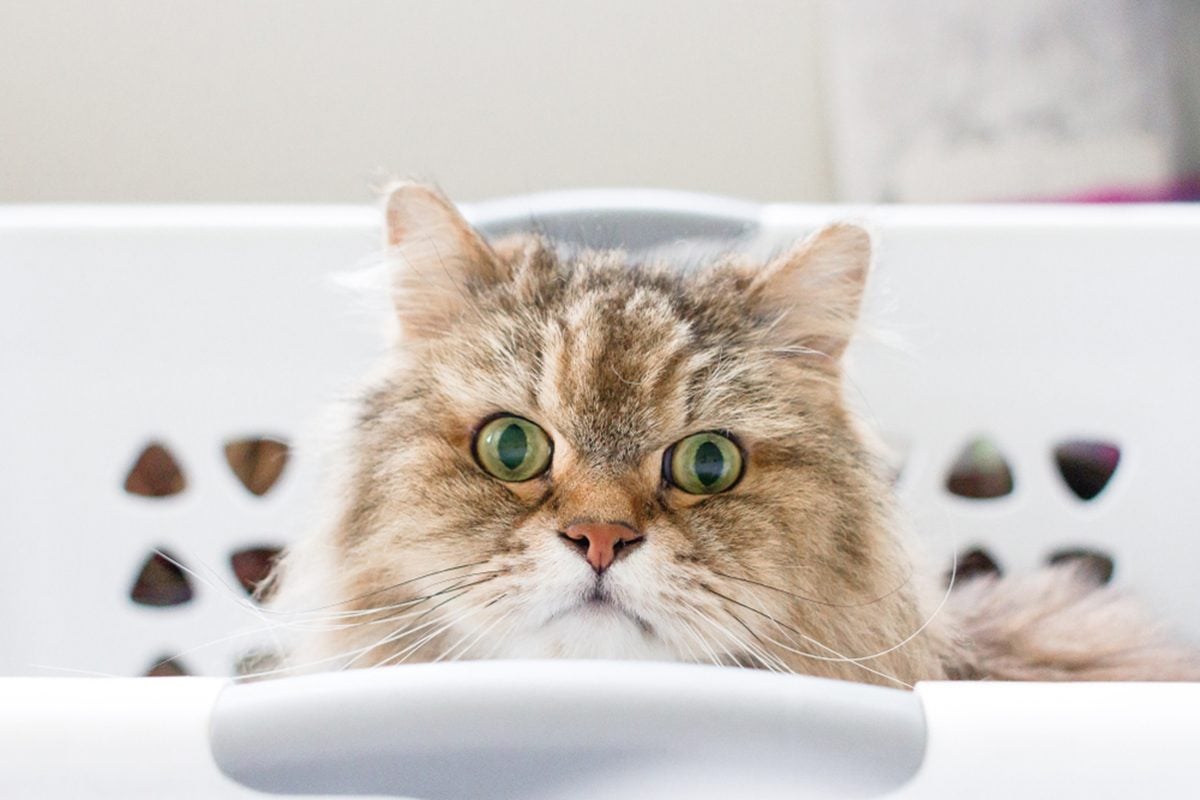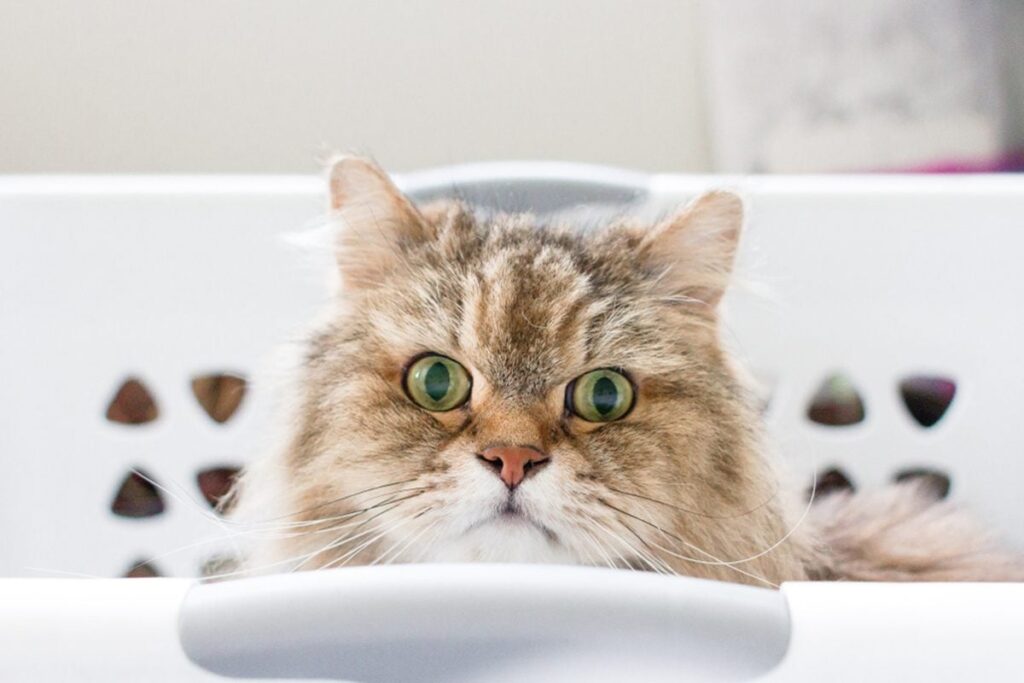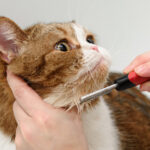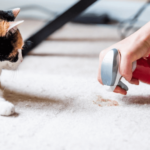Accidents happen, and sometimes our furry friends can find themselves in a bit of a colorful predicament—especially when paint is involved! Whether it’s a DIY home project gone awry or an art session that got out of hand, seeing paint splattered on your cat’s fur can be alarming.
But don’t fret! Removing paint from your cat’s fur is not only possible but can be done safely and easily with the right approach. In this friendly guide, we’ll walk you through simple and effective methods to free your feline from those unwanted hues, ensuring a stress-free experience for both you and your pet. With a little patience and the right tools, you’ll have your kitty looking clean and fabulous in no time!
Table of Contents
- Understanding the Risks of Paint Exposure for Cats
- Gentle Techniques for Safely Removing Paint from Fur
- Essential Supplies for a Successful Cleanup
- Preventive Measures to Protect Your Cat from Paint Mishaps
- Q&A
- Key Takeaways
Understanding the Risks of Paint Exposure for Cats
When it comes to paint exposure, our feline friends face a variety of health risks that can cause concern for any pet owner. Inhalation of paint fumes can lead to respiratory issues, including coughing, sneezing, or even more severe conditions if exposed for extended periods. Additionally, ingesting paint—whether through grooming or curiosity—can result in severe gastrointestinal upset, and some paints may contain toxic substances that could lead to long-term health complications. Being aware of these dangers is crucial for maintaining your cat’s well-being during home improvement projects or art sessions.
To better understand the potential risks, it’s essential to differentiate between types of paint. Some common categories include:
Acrylic Paint: Generally water-based and less toxic, but can still be harmful in large quantities.
Oil-Based Paint: Contains solvents that are particularly dangerous if ingested or inhaled.
Spray Paint: Has strong fumes and can cause respiratory distress if inhaled.
| Type of Paint | Toxicity Level | Common Symptoms |
|---|---|---|
| Acrylic | Low | Minor irritation, vomiting |
| Oil-Based | High | Severe gastrointestinal issues, lethargy |
| Spray | Medium | Coughing, difficulty breathing |
Awareness of these risks can significantly reduce the chances of your cat encountering paint-related hazards. Always monitor your environment when working with paints, and ensure your cat is in a safe, well-ventilated area far from the activity to prevent any accidents.
Gentle Techniques for Safely Removing Paint from Fur
When it comes to removing paint from your furry friend, it’s essential to use gentle methods that won’t harm their skin or coat. Start by preparing a safe and calm environment. Ensure your cat is relaxed by providing treats or their favorite toys. You’ll want to gather a few supplies: warm water, mild soap (like dish soap), a soft cloth or sponge, and a pair of scissors in case you need to trim away any heavily painted fur. Be sure to act quickly, as the sooner you address the problem, the easier it will be to remove the paint without causing any distress.
Begin by wetting the cloth or sponge with warm, soapy water. Lightly dab the painted area, being careful not to rub too hard, as this can irritate your cat’s skin. Use a gentle, blotting motion to lift the paint from the fur. If the paint is stubborn, consider using a mixture of warm water and a small amount of olive oil or baby oil to help break it down. Remember to rinse frequently with clean, warm water to remove any soap residue. In cases of dried paint, you may need to carefully cut away the affected fur, but only do this as a last resort. Monitor your cat throughout the process to ensure they remain calm and comfortable.
Essential Supplies for a Successful Cleanup
To ensure a smooth and effective cleanup when removing paint from your cat’s fur, gathering the right supplies is crucial. Start with the basics: gentle soap or cat-specific shampoo to safely cleanse their fur without causing irritation. Additionally, have soft towels on hand for drying your feline friend and minimizing their stress. It’s also beneficial to use cotton balls or soft cloths for targeted areas where the paint may be concentrated. If the paint is particularly stubborn, a non-toxic solvent like mineral oil can assist in breaking it down, but always test it on a small area first to ensure it’s safe for your pet.
Consider creating an organized cleanup station to keep everything within arm’s reach. A simple container or basket can hold all your supplies, making the process more efficient. Below is a quick reference table for essential items:
| Item | Purpose |
|---|---|
| Gentle Soap | Safe cleansing of fur |
| Soft Towels | Drying and comfort |
| Cotton Balls/Cloths | Targeted cleaning |
| Non-Toxic Solvent | Removes stubborn paint |
Preventive Measures to Protect Your Cat from Paint Mishaps
To keep your feline friend safe from paint mishaps, it’s essential to create a controlled environment during your painting projects. Start by designating a paint-free zone where your cat cannot enter. This can be achieved by using gates or closed doors to restrict access. Additionally, consider utilizing pet-friendly paints that are low in VOCs (volatile organic compounds) and free from harmful chemicals. These alternatives not only protect your cat but also ensure better air quality in your home.
Another effective strategy is to keep all painting supplies securely stored away when not in use. Cats are naturally curious and may seek out interesting objects, including brushes and paint cans. Here are some quick tips to further safeguard your pet:
- Cover furniture and floors: Use drop cloths to minimize mess.
- Provide distractions: Engage your cat with toys or treats in a separate room.
- Learn to recognize signs: Watch for paint fumes and ensure proper ventilation.
Q&A
Q1: What should I do immediately if I notice paint on my cat’s fur?
A1: If you discover paint on your cat, the first step is to remain calm and reassure your pet. Gently assess the situation and determine how much paint is on their fur. If the paint is wet, you can attempt to wipe it off carefully with a soft cloth or paper towel. Avoid using any harsh chemicals or scrubbing, as this may irritate your cat’s skin.
Q2: What types of paint are typically safe or unsafe for my cat?
A2: Water-based paints, like acrylics, are generally safer and easier to remove. However, oil-based paints and those containing toxic solvents can be harmful to your cat. If you suspect your cat has come into contact with hazardous paint, it’s best to consult a veterinarian immediately.
Q3: How can I safely remove paint from my cat’s fur?
A3: For water-based paint, you can try the following method:
- Gather your materials: You’ll need warm water, mild dish soap, a soft cloth or sponge, and possibly some vegetable oil or baby oil for stubborn spots.
- Wet the area: Dampen the fur around the paint with warm water.
- Apply soap: Use a small amount of mild dish soap on the paint-stained area and gently work it into the fur.
- Rinse: Rinse thoroughly with warm water to remove the soap and paint.
- Repeat if necessary: For persistent paint, apply a bit of vegetable oil or baby oil, let it sit for a few minutes, then repeat the washing process.
Always ensure your cat is comfortable throughout the process and never hesitate to seek professional help if needed.
Q4: Are there any products I should avoid using on my cat?
A4: Yes, avoid using any harsh chemicals, solvents, or products not specifically designed for pets. This includes paint thinners, acetone, and other industrial cleaners, as they can be toxic and harmful to your cat’s health.
Q5: How can I prevent paint from getting on my cat in the future?
A5: The best way to prevent paint mishaps is to keep your cat away from areas where painting is taking place. Consider setting up a separate space for your painting projects and ensure all paint containers are securely closed when not in use. Providing a safe, enclosed area for your cat during these times can help them stay safe.
Q6: When should I contact a veterinarian?
A6: If your cat has ingested paint, shows signs of distress, or if the paint appears to be oil-based or toxic, contact your veterinarian immediately. Additionally, if you’re unsure about the type of paint or if your cat’s skin is irritated after attempting to clean it, it’s best to seek professional advice.
Q7: Can my cat’s fur be dyed or repainted after removing paint?
A7: It’s not recommended to dye or repaint your cat’s fur. Cats have sensitive skin, and applying dye could lead to irritation or allergic reactions. It’s best to embrace your cat’s natural fur color and avoid unnecessary products that might cause harm.
Q8: What if my cat is too distressed during the cleaning process?
A8: If your cat becomes too anxious or upset, it’s important to stop and allow them some time to calm down. You might try again later, or if necessary, consider consulting a veterinarian or a professional groomer who has experience with such situations. Always prioritize your pet’s comfort and well-being.
By following these friendly and informative guidelines, you can ensure a safe and effective paint removal process for your furry friend. Remember, patience and gentle handling are key!
Key Takeaways
removing paint from your cat’s fur doesn’t have to be a stressful ordeal. By following the steps outlined in this guide and using gentle, pet-safe products, you can ensure that your feline friend remains both happy and healthy throughout the process. Remember, patience is key; it’s important to take your time to avoid causing any unnecessary stress to your pet. Always keep a close eye on their comfort level and, when in doubt, consult your veterinarian for advice. With the right approach, you can have your cat looking pristine again in no time! Thank you for reading, and here’s to many more playful, paint-free moments with your furry companion!

















